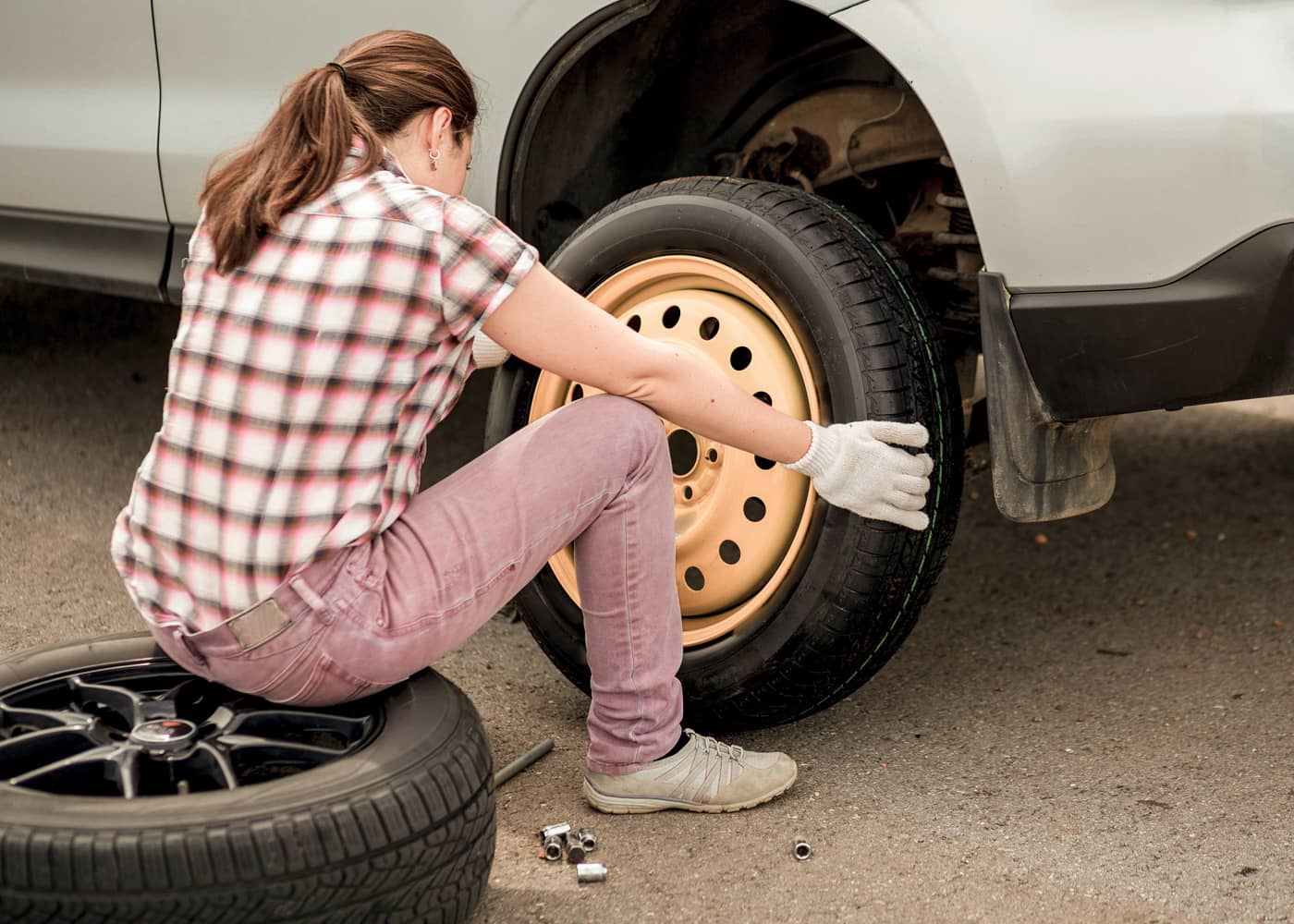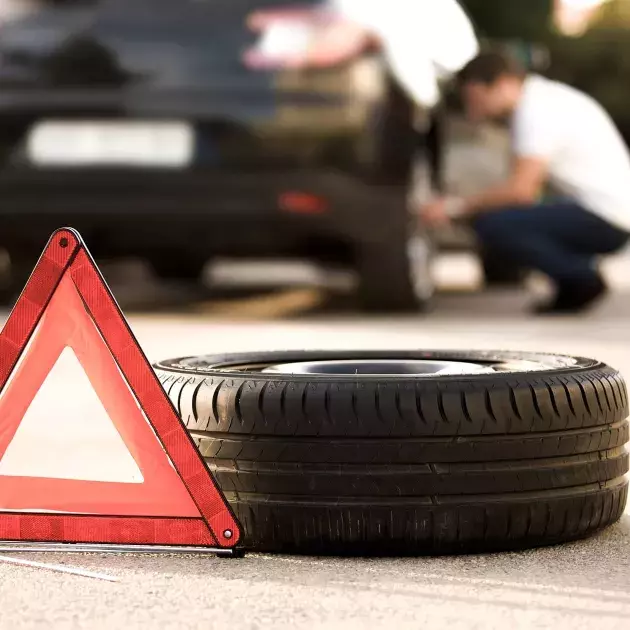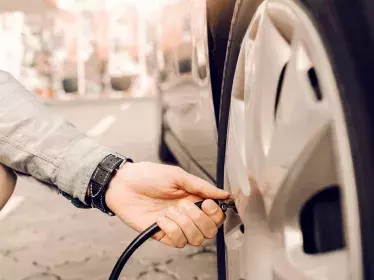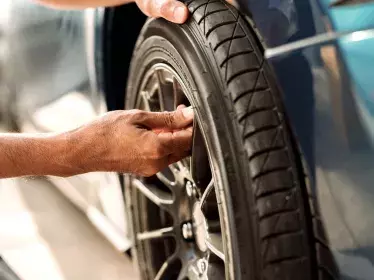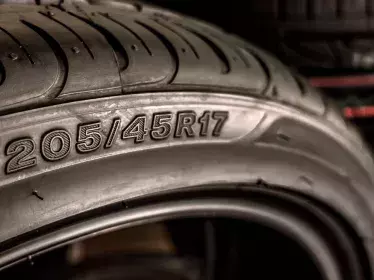It is very important to check your tyres regularly. For example, you should check the pressure. It must be adjusted for long journeys. Above all, avoid driving with underinflated tyres! They may burst. This is obviously a very dangerous situation on the road. A puncture can be slow with a small amount of damage, but it can also be extremely fast if there is a sharp object on the road surface. How do I change a tyre?
The first thing you need to do is to find a safe place. With a punctured tyre, it is possible to drive a few hundred metres without risking excessive damage to the car. Do a visual check to find out the cause of the puncture.
More and more cars no longer have a spare wheel. They just have a repair system to connect to the cigarette lighter. This appliance should only be used on a short journey to the nearest garage, or at home or in a more convenient place to await breakdown assistance. But before use, make sure that it is not punctured by a nail or screw. Often, the repairer will be able to repair the tyre with a mesh.
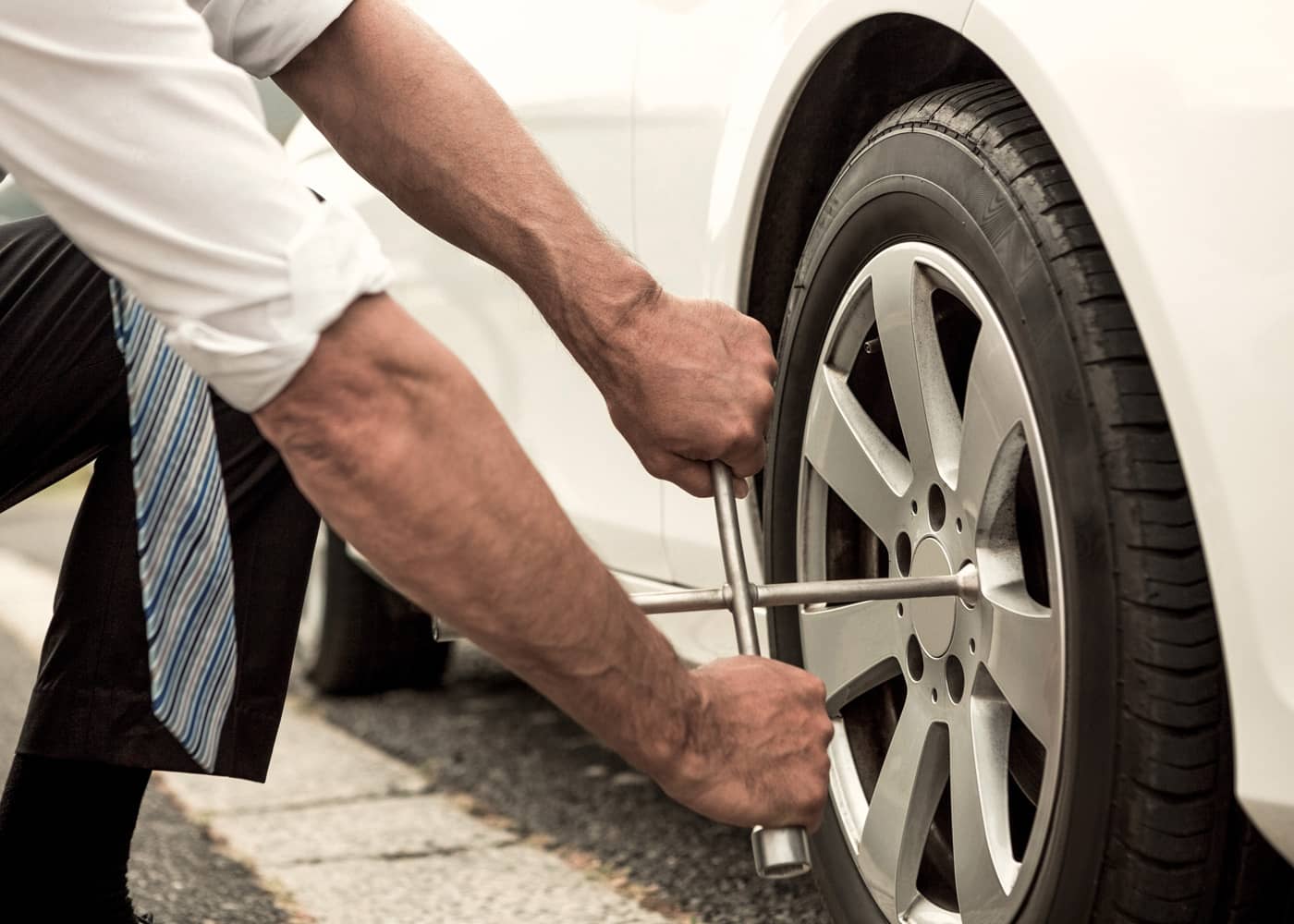
How to change a tyre in 15 simple steps
If you have an emergency spare wheel (or a 'doughnut' spare wheel), here is how to proceed:
- Find a safe place, on hard ground and not on a slope. Apply the handbrake and put the car in 1st gear if you have a manual gearbox and in position P if you have an automatic. Put on your safety vest and put out your warning triangle to warn other road users. Nobody should stay in the car when you are changing the tyre.
- Collect all the equipment necessary for changing the wheel in the storage compartment provided in the car (jack, locking wheel nut key and tool kit, emergency spare wheel, user manual, and possibly gloves). Place all of this close to you without it getting in the way.
- Remove the wheel trim or unlock the locking wheel nut on the wheel rim (see procedure in the vehicle user manual).
- Loosen the nuts BEFORE placing the jack. You will need to turn then anti-clockwise. If necessary, if the bolts are seized, stand on the locking wheel nut key and lean on the body. Do not remove the bolts yet.
- Place the jack in the intended location (there is a mark on the chassis to indicate the reinforced location).
- Start lifting the car with the jack, just high enough so that the wheel is not touching the ground.
- Remove the bolts and put them together in a safe place.
- Holding it in your arms (similar to embracing it), remove the wheel.
- Pick up the emergency spare wheel and fit it correctly. Refit the bolts by tightening them a little by hand, then tighten them using the spanner in a 1 – 3 – 2 – 4 sequence (so do not tighten the adjacent nuts).
- Lower the jack. And make sure all 4 wheels are in contact with the ground.
- Give the last turns of the key, and possibly a small turn with your foot on the key in a cross pattern by pressing down with your full weight (but do not force it).
- If it is a 'doughnut' wheel, observe the speed limit indicated on the rim. If it is a full-size wheel, refit the wheel trim if necessary.
- Modern cars all have a tyre pressure monitoring system (TPMS). It is possible to reconfigure the pressure sensors following the procedure explained in the user manual.
- Check the pressure at a petrol station as soon as possible and make an appointment with a professional to repair the punctured tyre or fit a new one.
- Enjoy the journey, but be careful.
